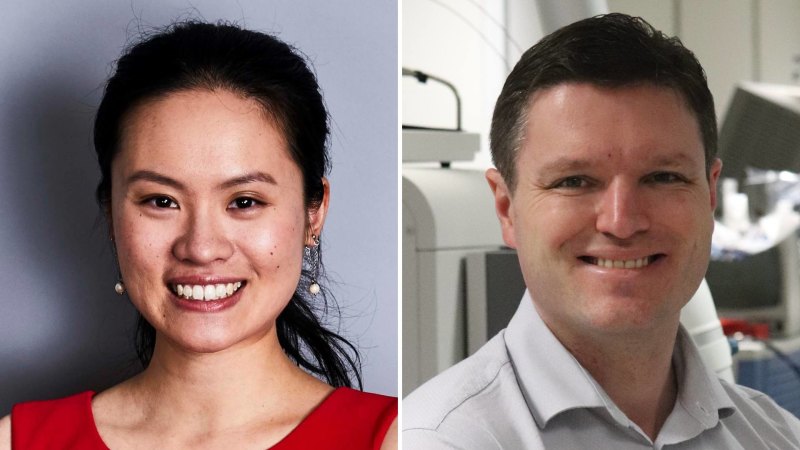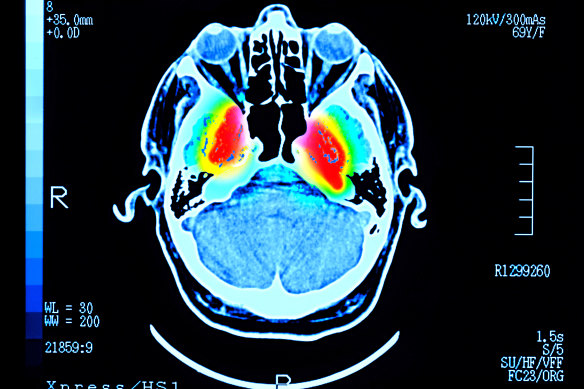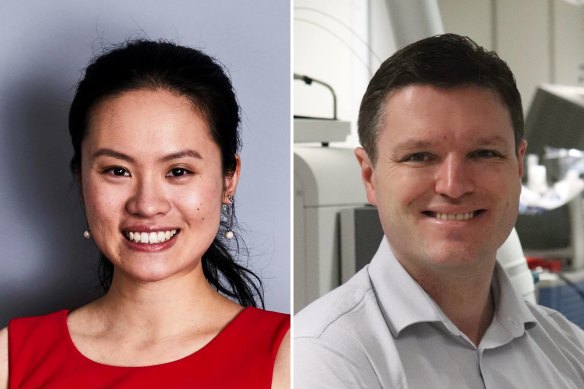Save articles for later
Add articles to your saved list and come back to them any time.
Doctors could soon diagnose Parkinson’s disease years before physical symptoms first appear after researchers used artificial intelligence to find early signs of the disease in the chemicals in patients’ blood.
Parkinson’s disease affects around 150,000 Australians and there is no test that can diagnose it before motor symptoms appear. But an AI program developed by a team of researchers from the University of NSW and Boston University has shown early promise. In a study published in the ACS Central Science Journal on Wednesday, it predicted Parkinson’s disease with 96 per cent accuracy – and up to 15 years before symptoms appeared.
A scan of a brain with Parkinson’s disease. Credit: Getty
Co-author Diana Zhang said she first became interested in finding a diagnosis for Parkinson’s after hearing the story of Joy Milne, who claimed to be able to diagnose Parkinson’s by smell – years before symptoms appear.
Milne noticed a change in her husband’s scent, which she assumed was just sweat. Six years later, he was diagnosed with Parkinson’s, and Milne noticed other patients with the disease shared her husband’s musky scent, and realised the odour may be linked to the condition.
When scientists tested her claims by giving her T-shirts worn by people with and without Parkinson’s, Milne correctly assessed 11 out of the 12 cases.
“I wanted to see if there was a way to do what she can do, but on a bigger scale,” she said. “When I saw the opportunity with AI, I thought there must be a way for AI to be built where it can actually detect Parkinson’s early.”
Diana Zhang and William Alexander Arnold have developed an AI tool to predict Parkinson’s disease from blood data.
Drawing on blood data from a 1990s study that tracked 41,000 participants, 90 of whom developed Parkinson’s within 15 years, Zhang and colleagues from UNSW and Boston University trained an AI tool to identify metabolites – the chemical compounds the body uses to break down food, drugs and chemicals.
After comparing results with people in the study who didn’t go on to develop symptoms, the researchers were able to use the AI tool to find a combination of metabolites that were potential early indicators of Parkinson’s.
When the tool was tested on separate data, it predicted Parkinson’s with 96 per cent accuracy.
“Basically, what it’s doing is going through all these different combinations possible to see which gives you the best prediction [of disease],” Zhang said.
While researchers usually look at correlations between diseases and specific molecules, the AI tool’s computing power allowed the team to examine the hundreds of thousands of metabolites that could combine to provide a diagnosis.
“It means that if there are metabolites which may potentially have been missed using conventional approaches, we can now pick those up,” said the study’s co-author, associate professor W. Alexander Donald.
Donald said the AI tool would need to be tested on much larger databases and more diverse populations before it could be used reliably, but several of the chemical markers the AI identified had already been linked to Parkinson’s disease in other studies.
Sydney-based neurology specialist Miriam Wronski said technologies which allowed an earlier diagnosis, and thus earlier intervention, would greatly improve the quality of life for patients living with Parkinson’s disease.
“Parkinson’s disease remains a clinical diagnosis and can be particularly challenging in the early stages,” she said.
Zhang said that while it was still early days, the AI tool they had developed could also be used to identify causes of other diseases.
“Anyone with a similar data set, which is basically an Excel file, who has chemical information for other diseases and cancers can just use this tool to see how well it’s actually predicting their diseases,” she said. “We’re just really excited for people to try it out themselves.”
The Morning Edition newsletter is our guide to the day’s most important and interesting stories, analysis and insights. Sign up here.
Most Viewed in National
From our partners
Source: Read Full Article



